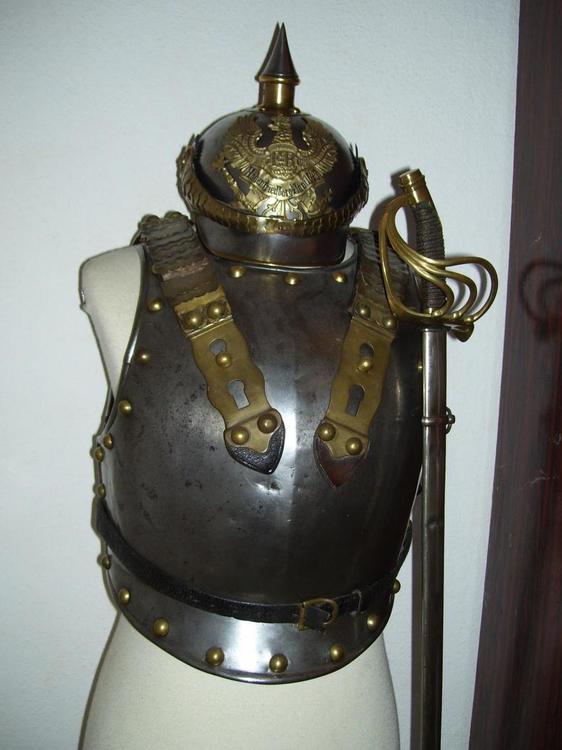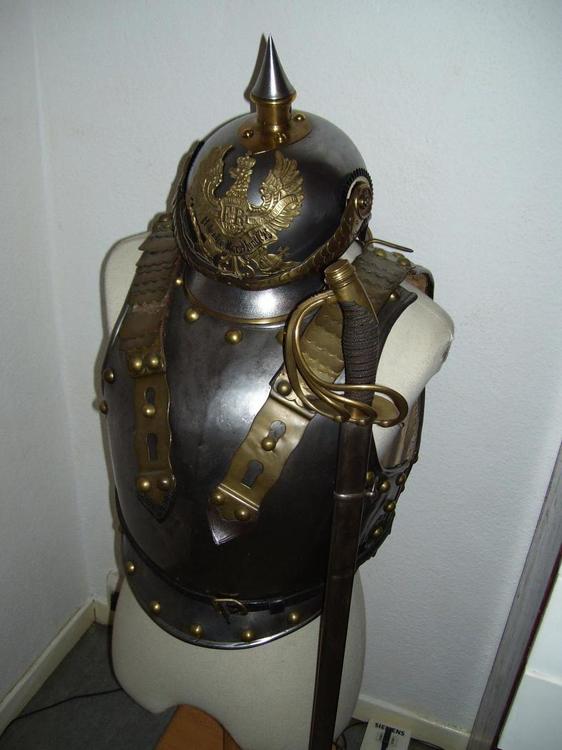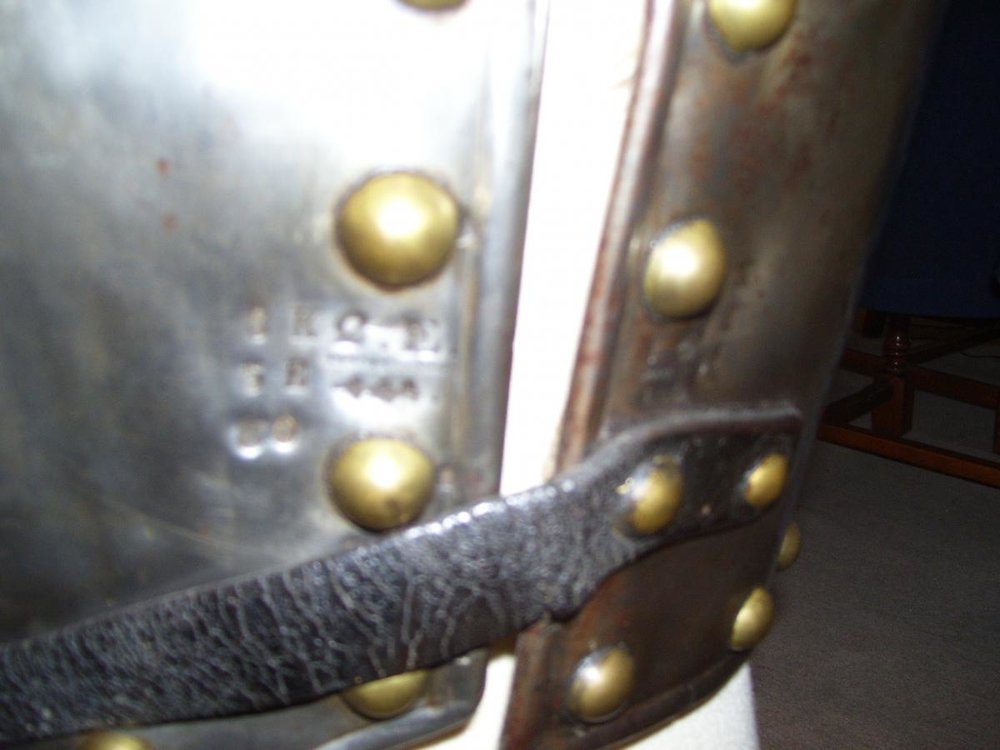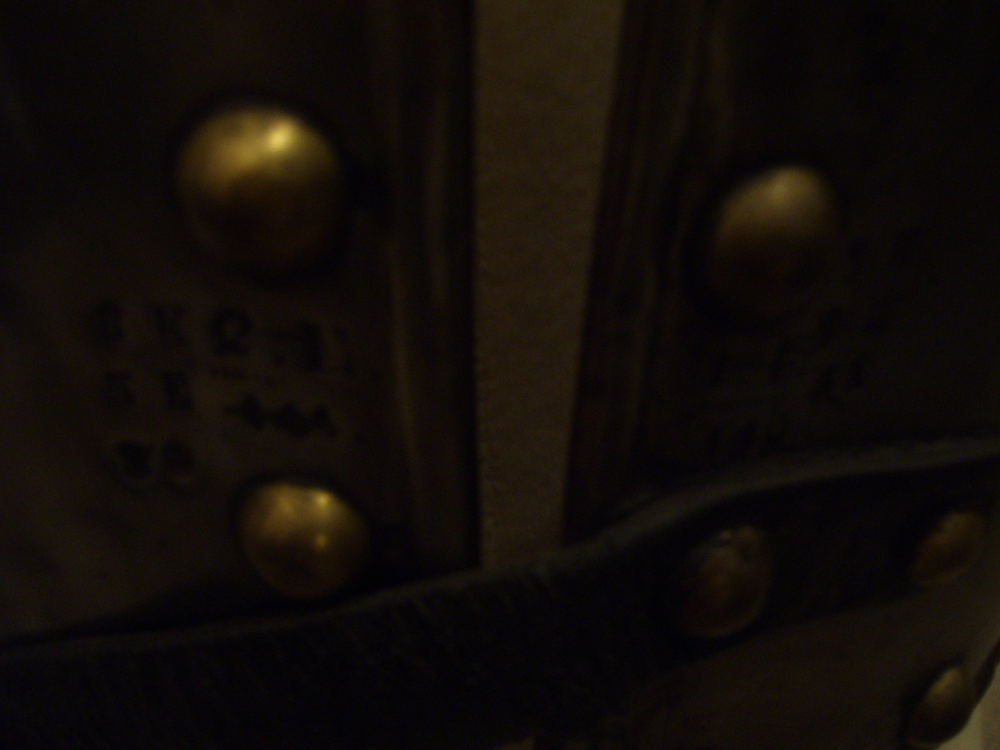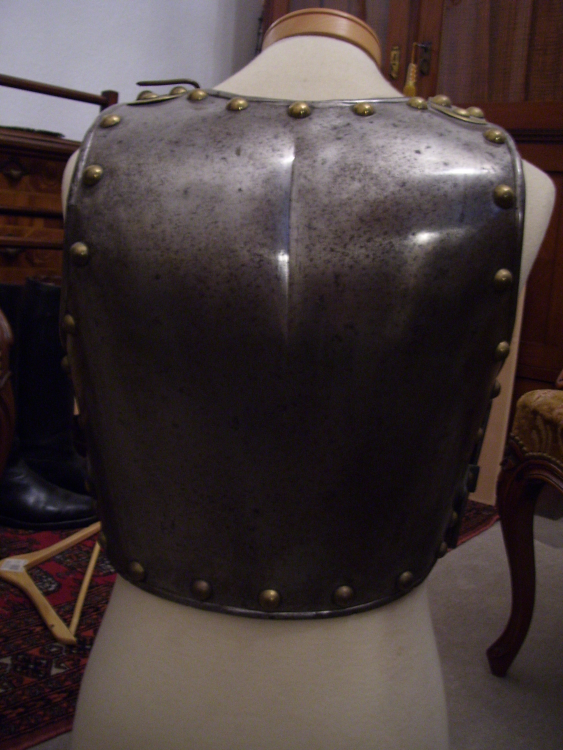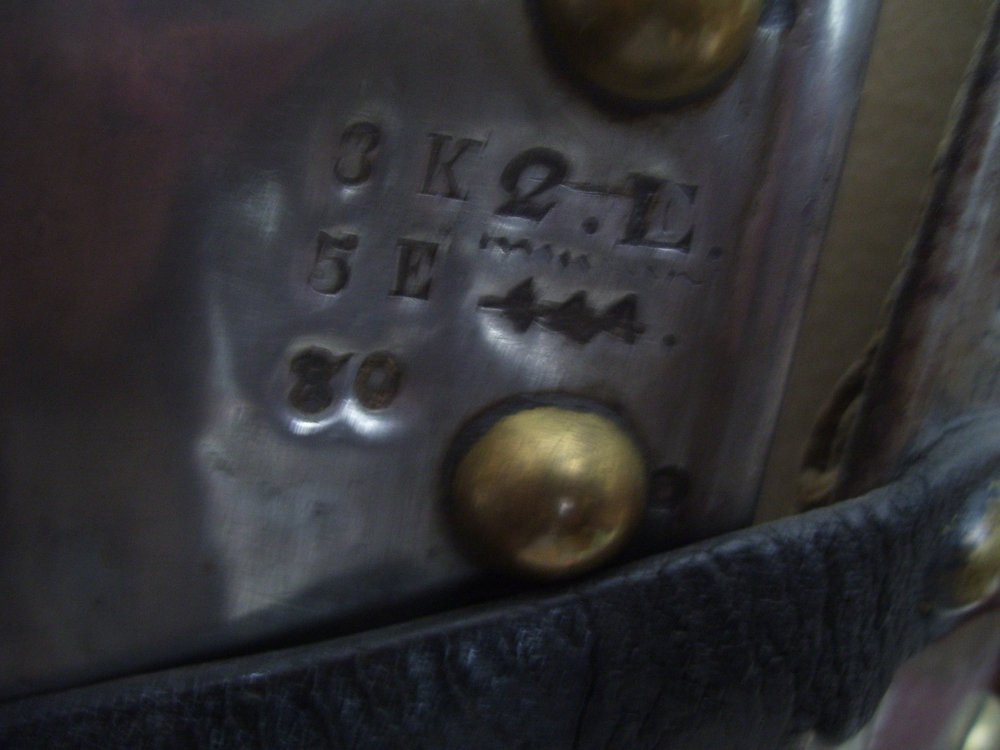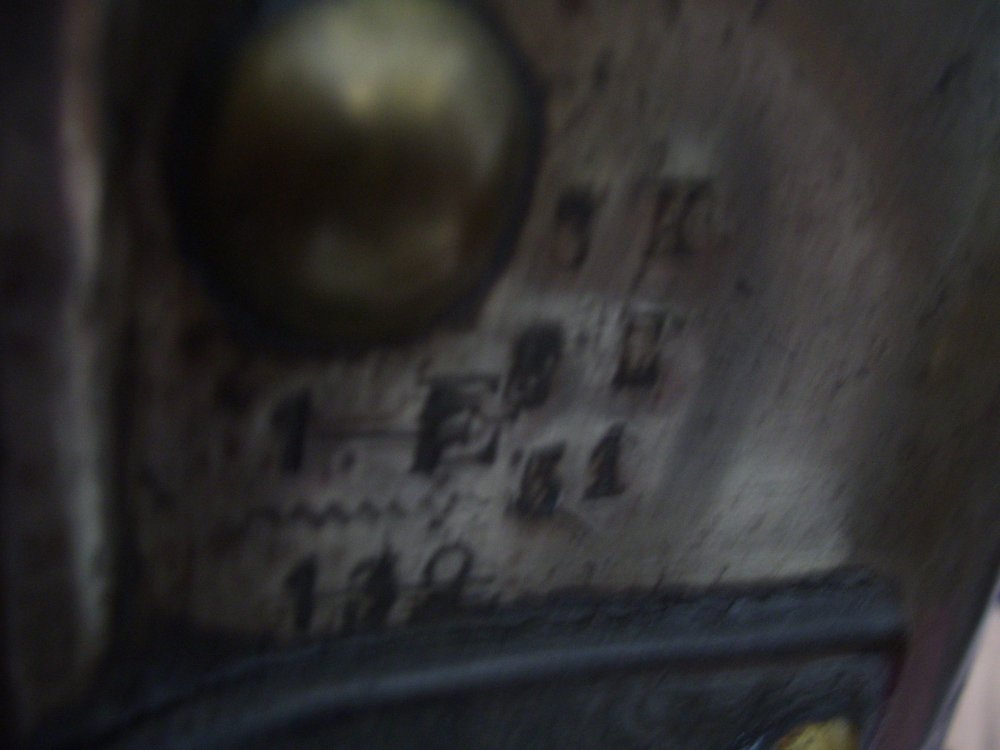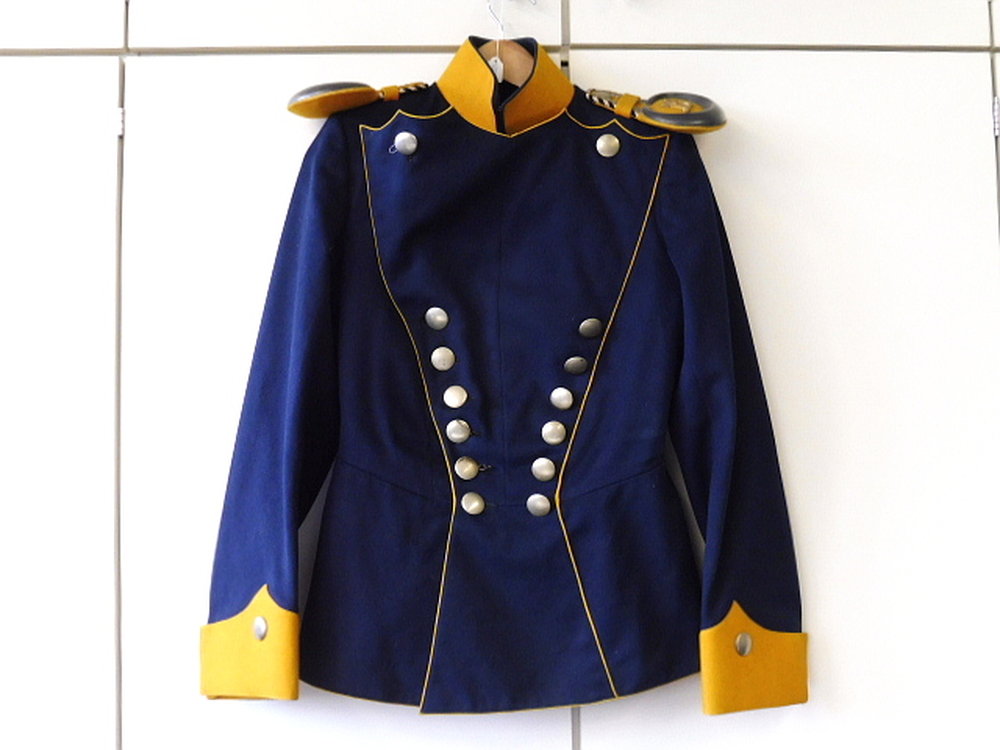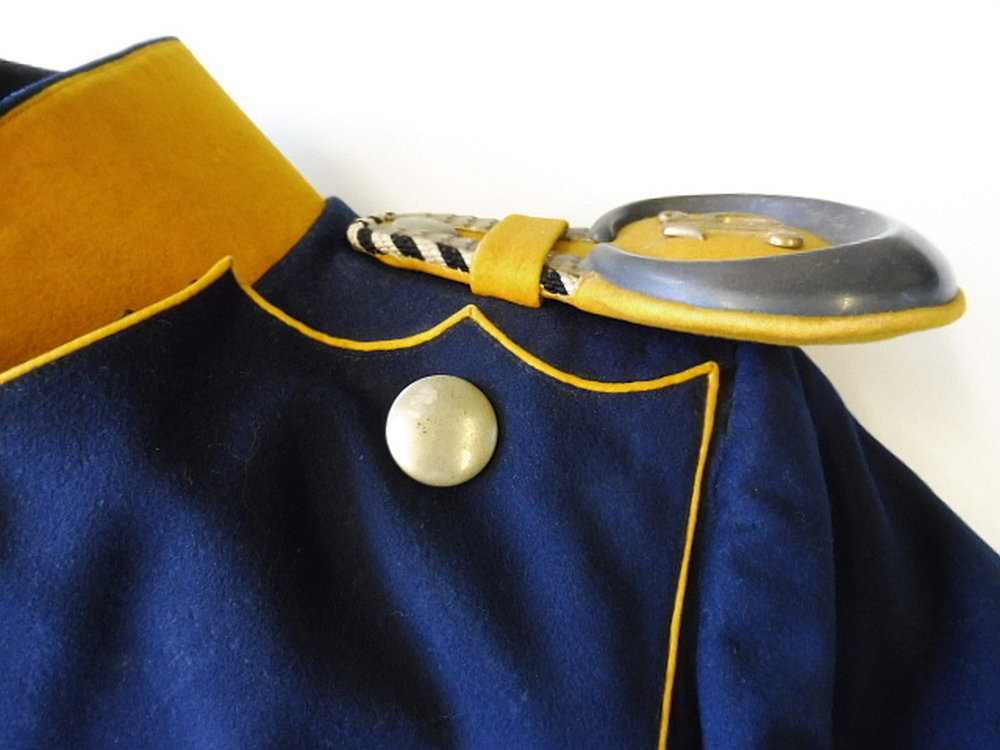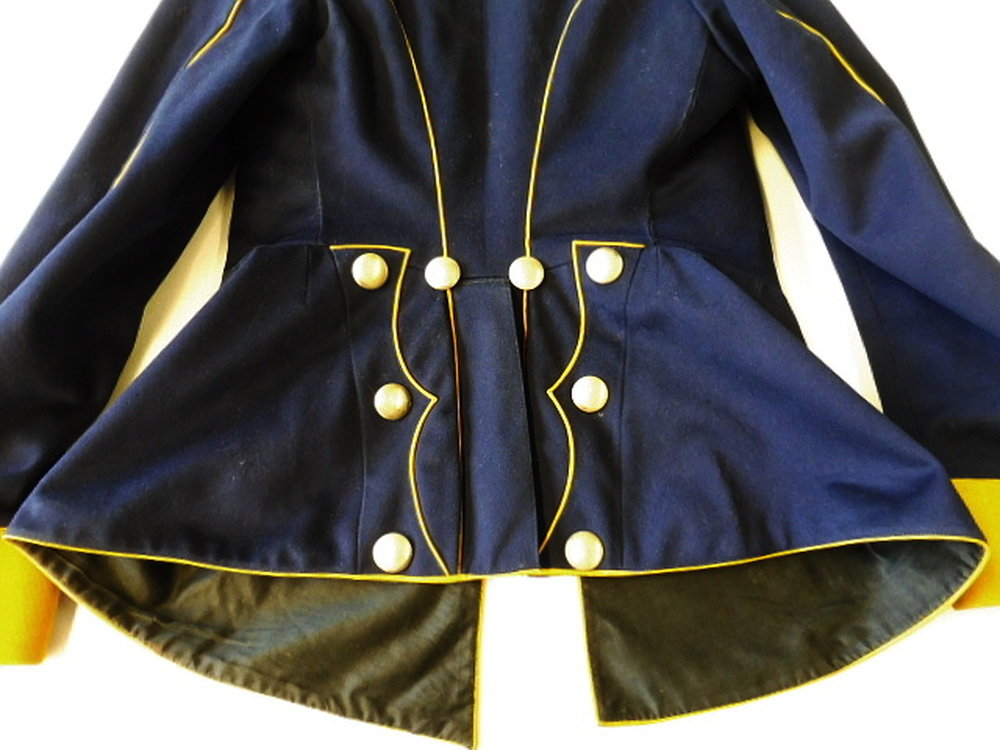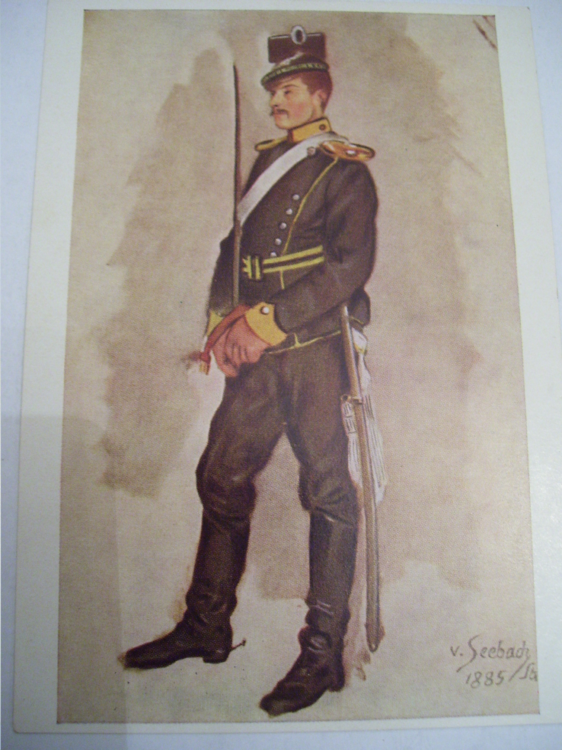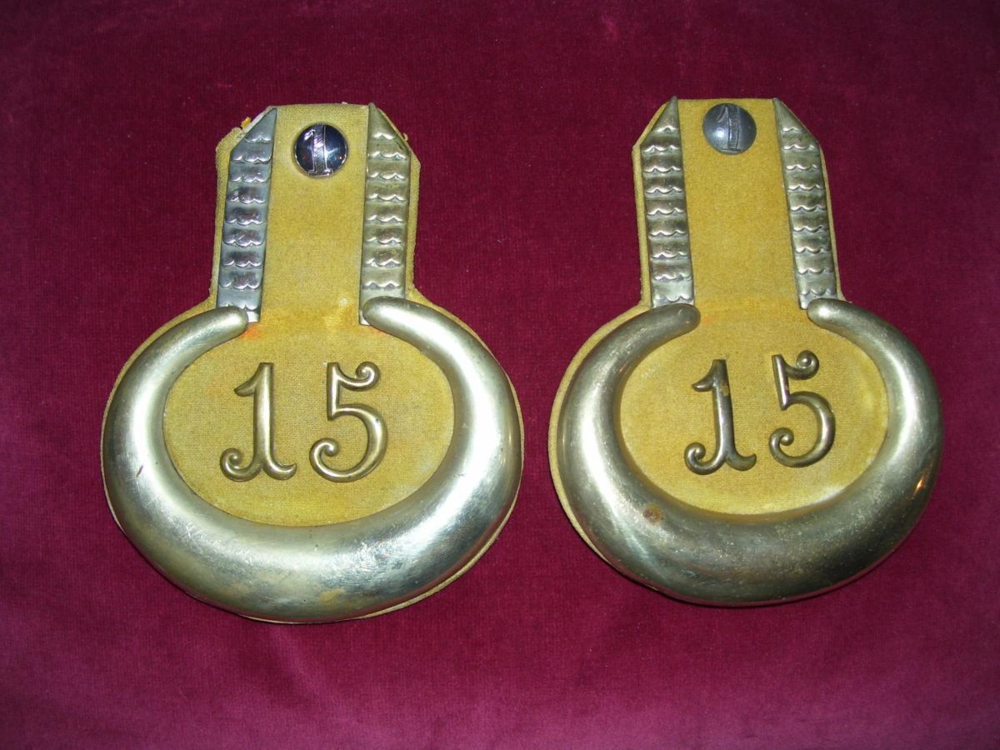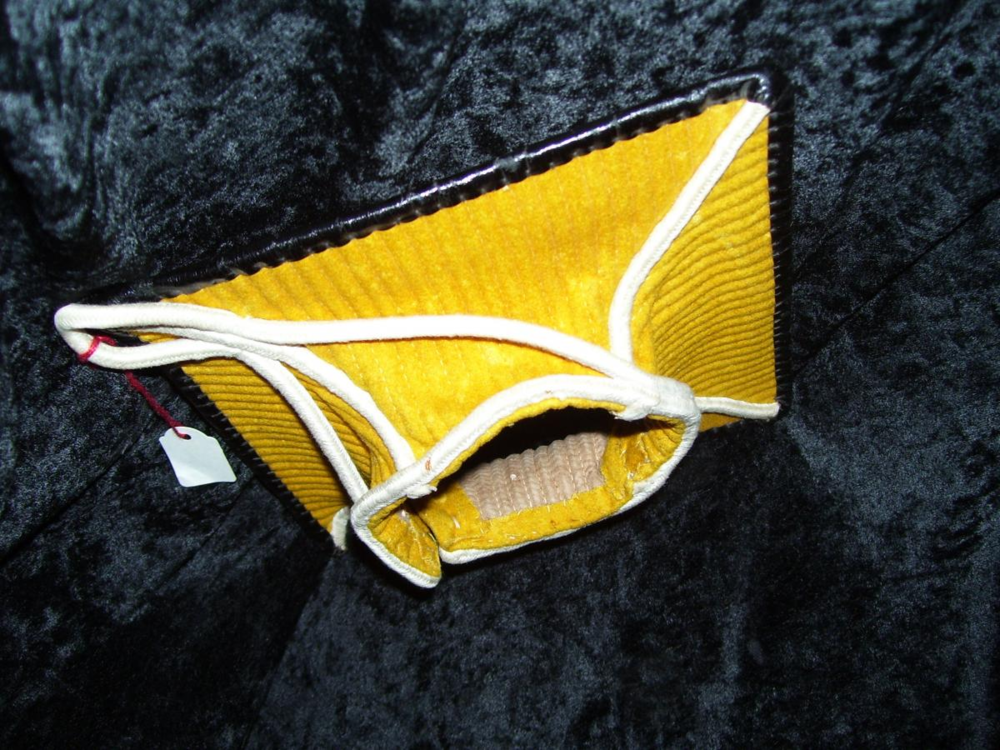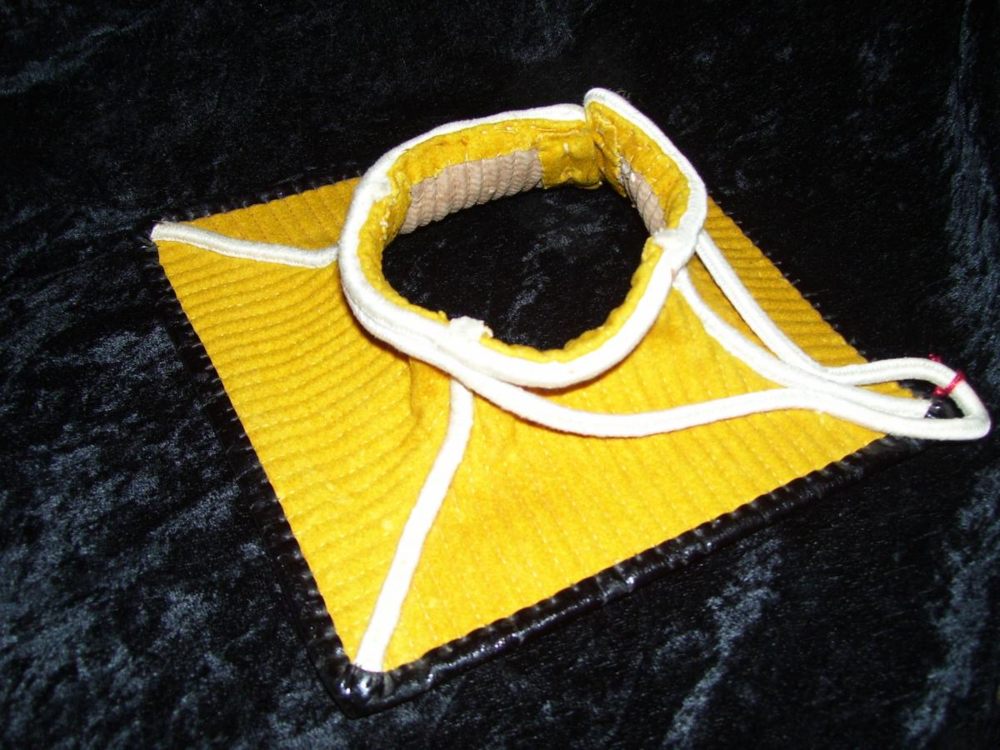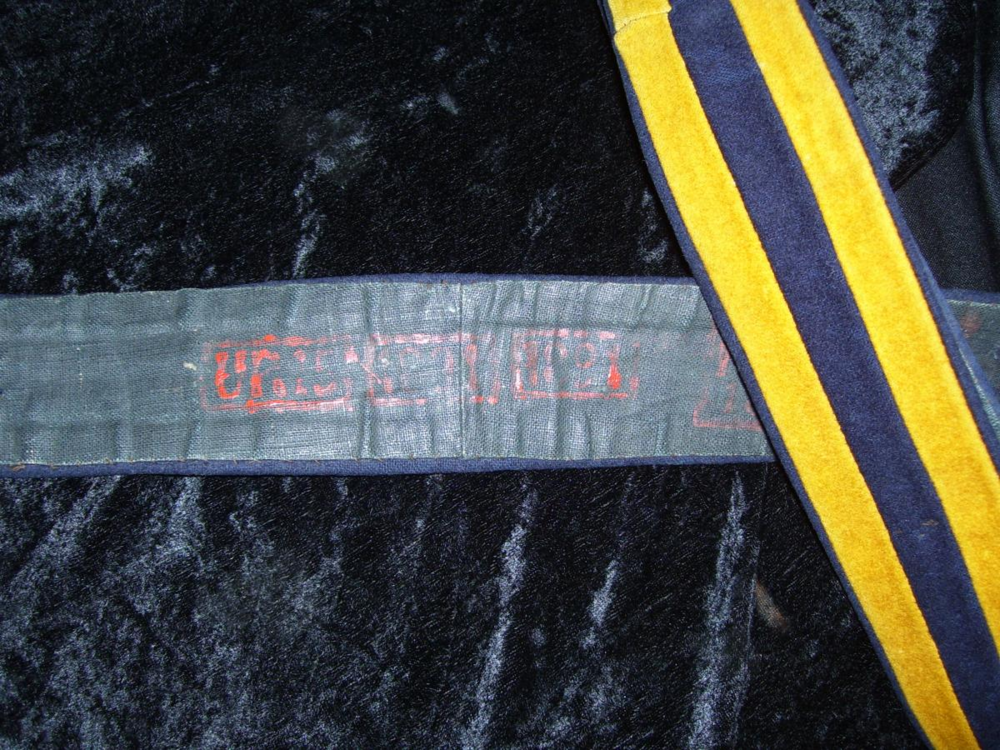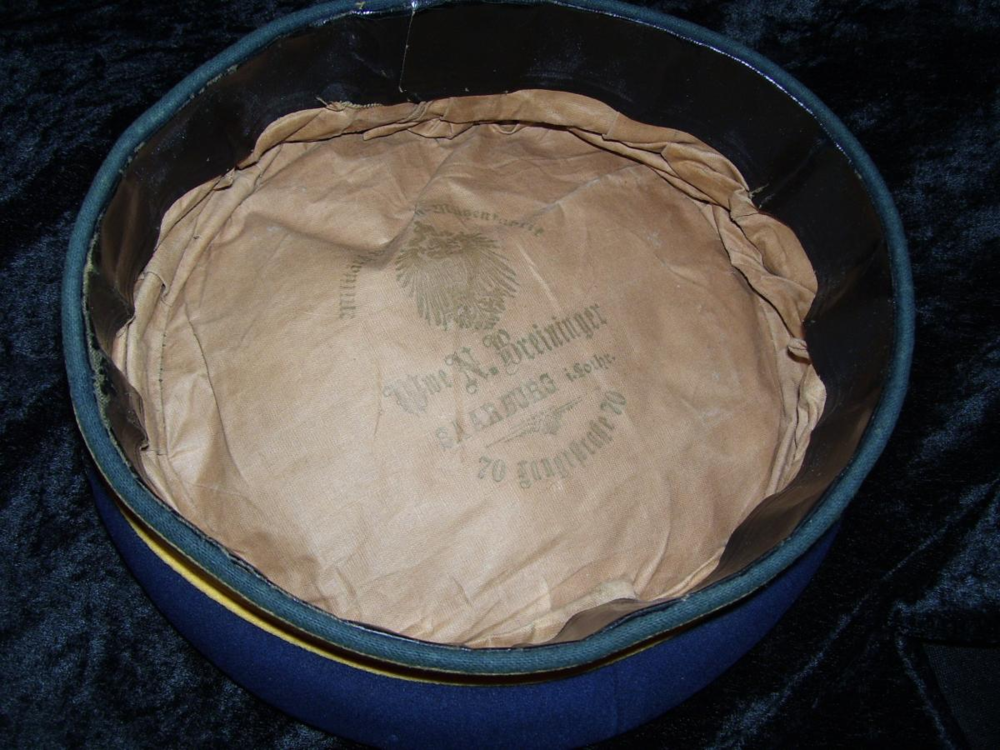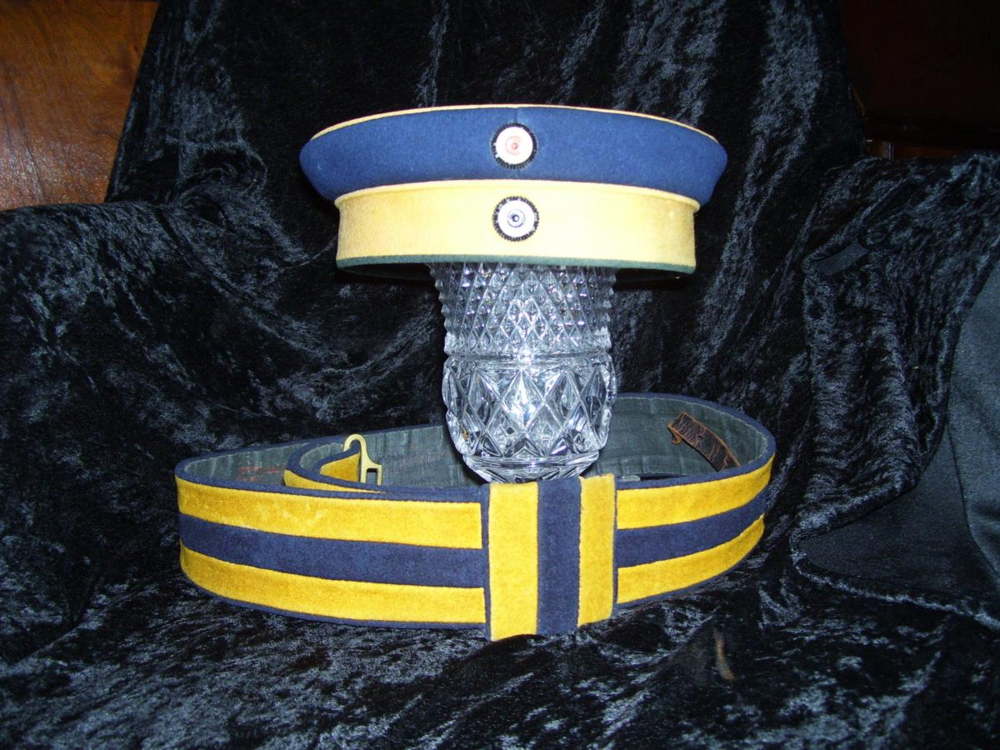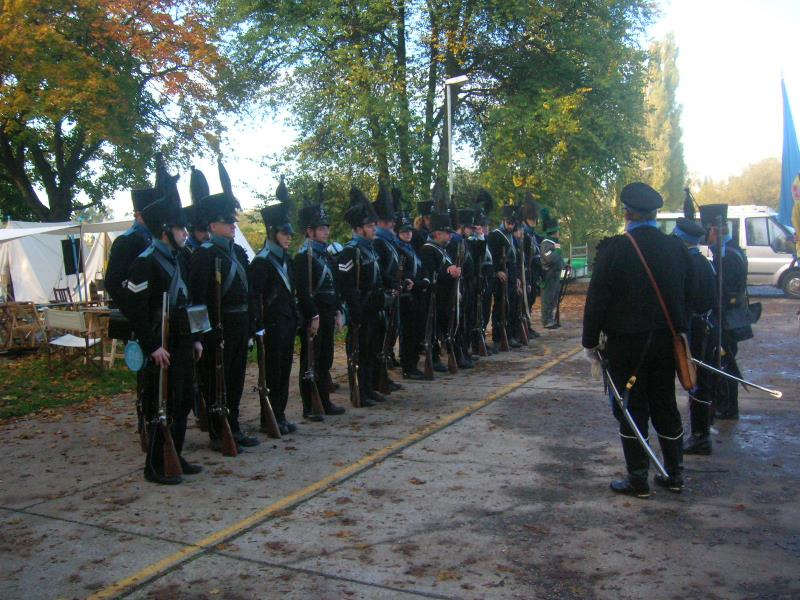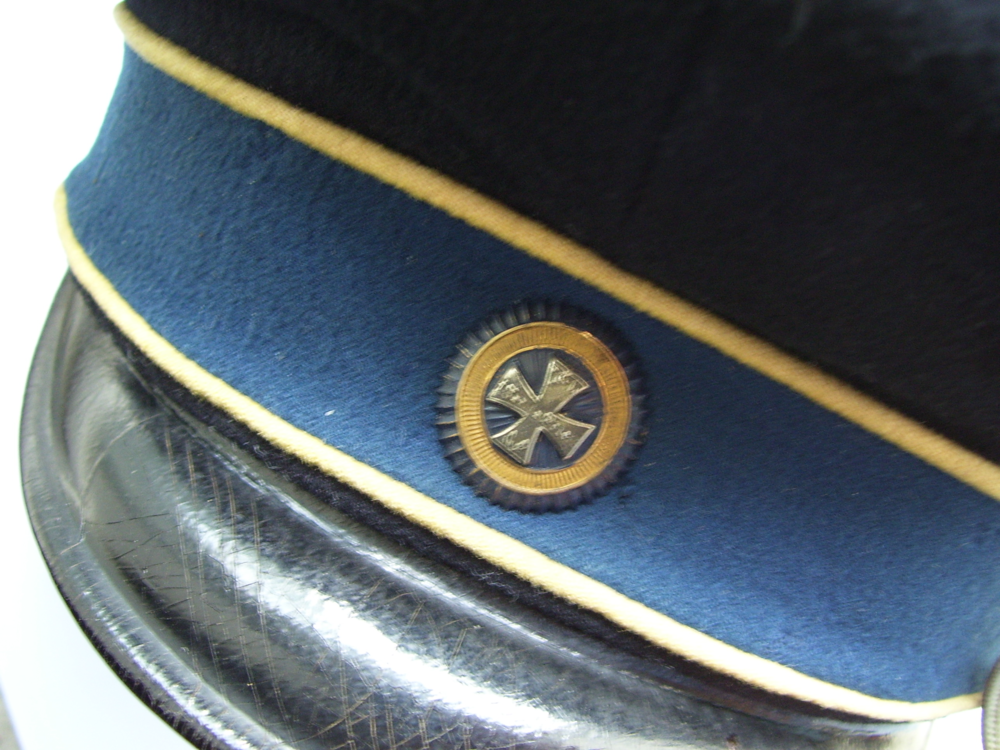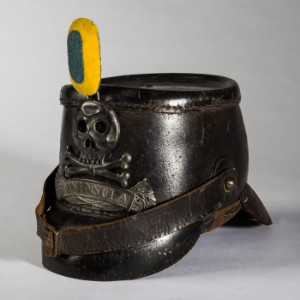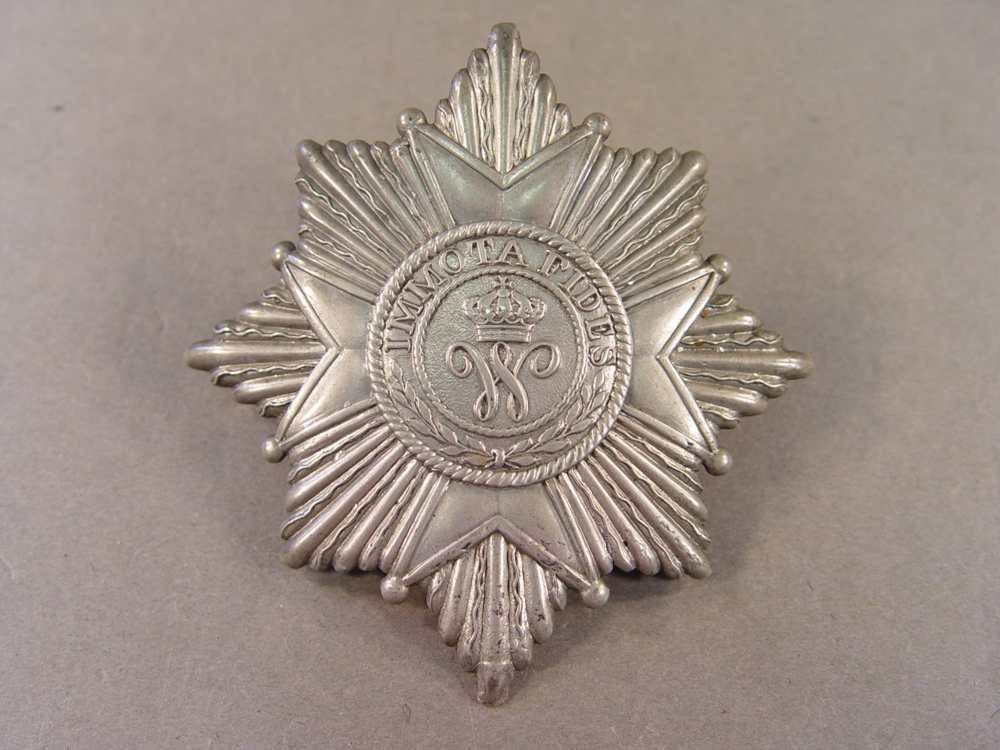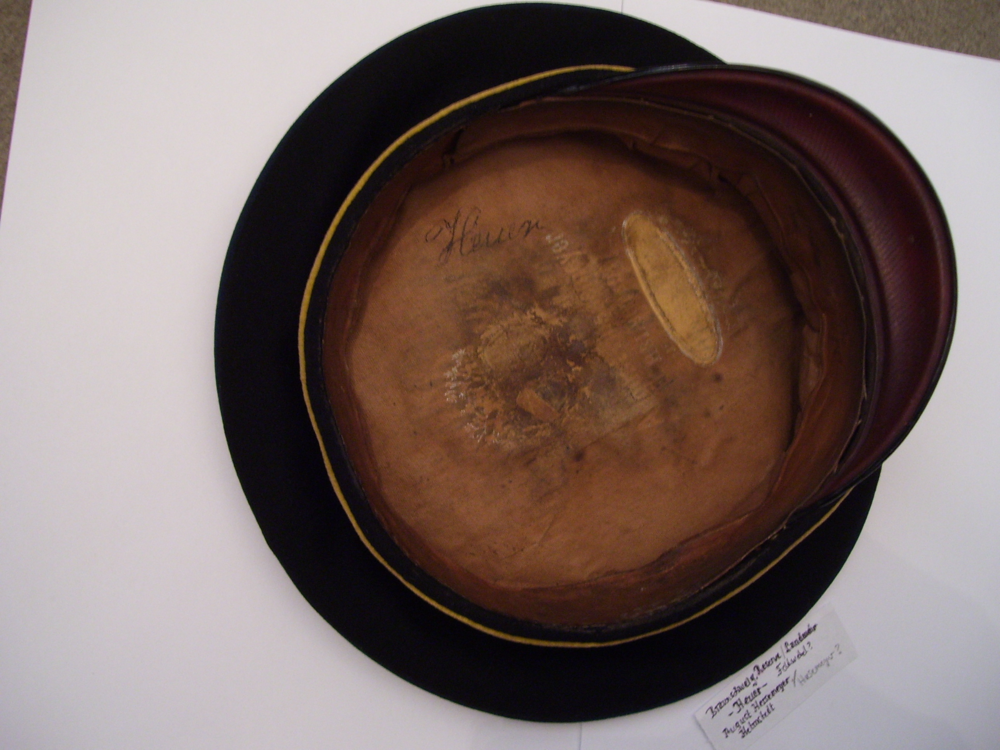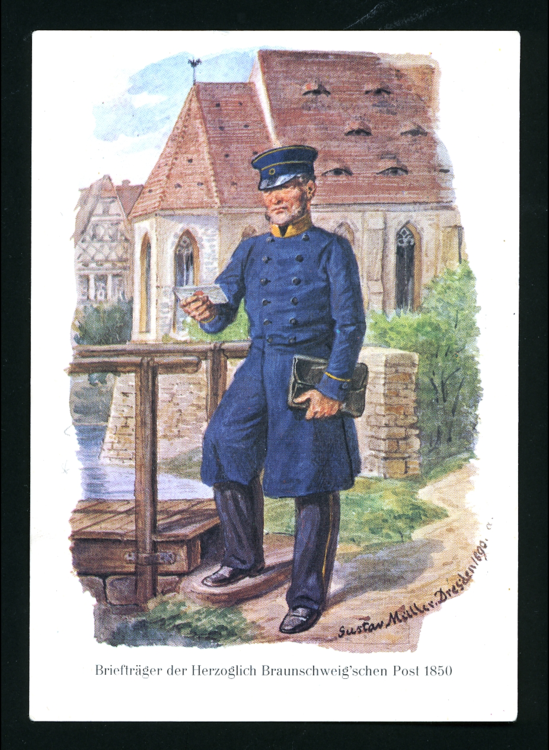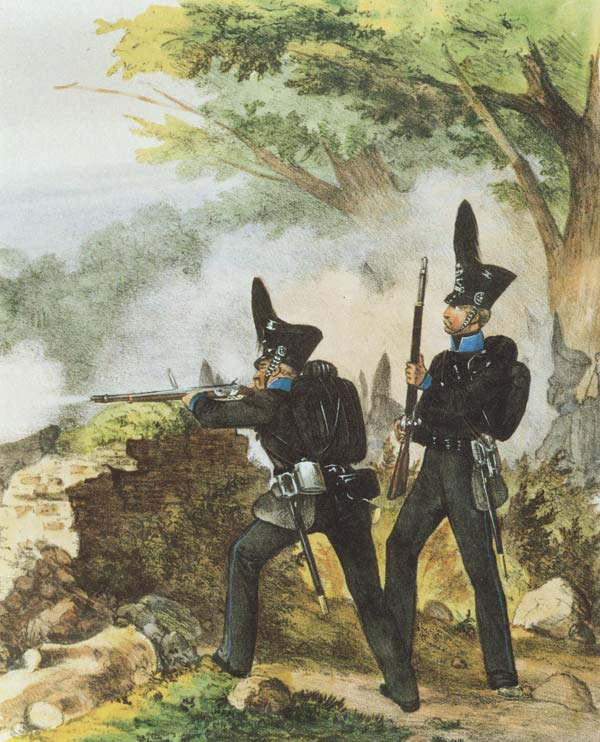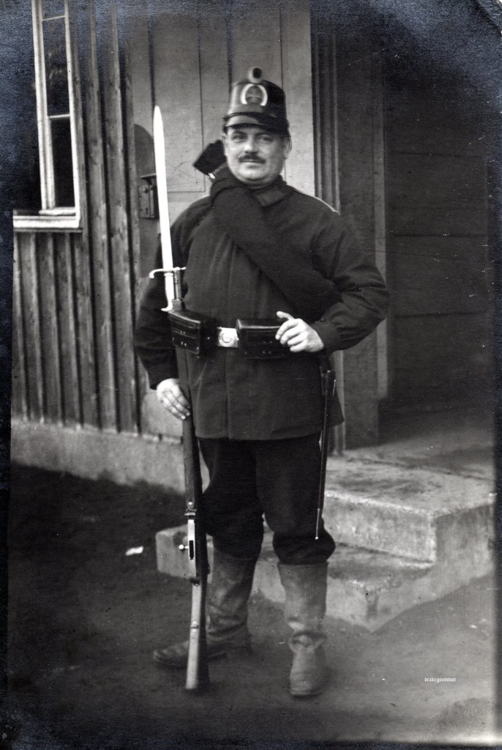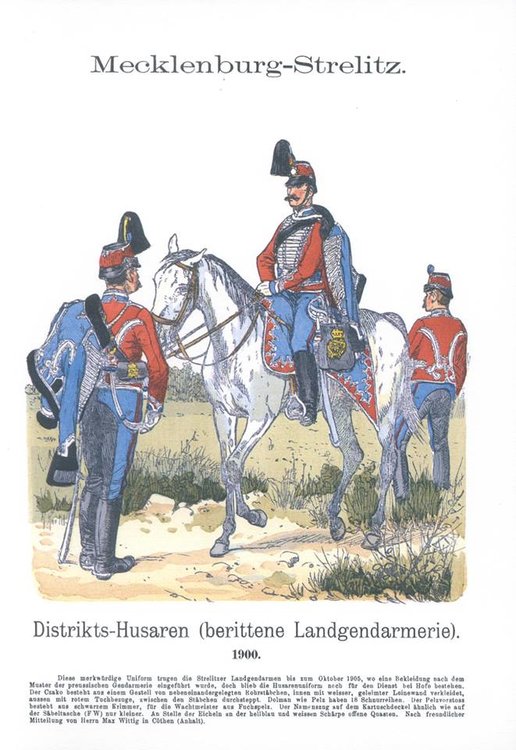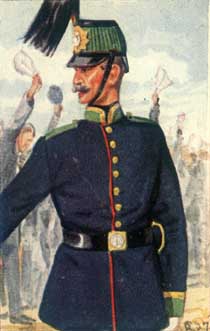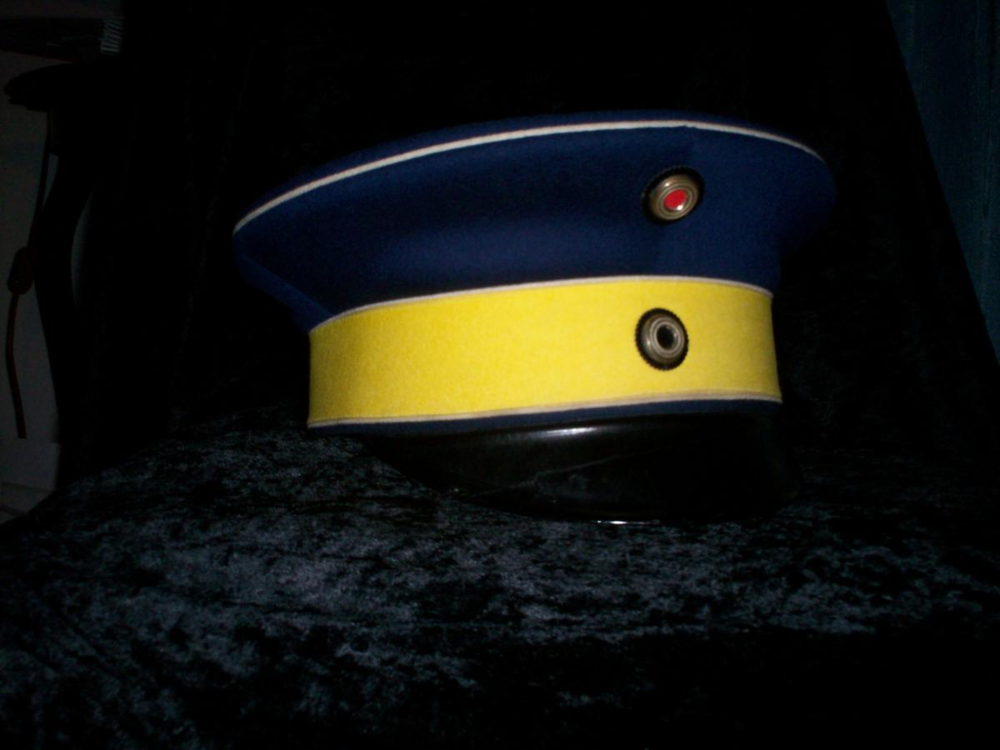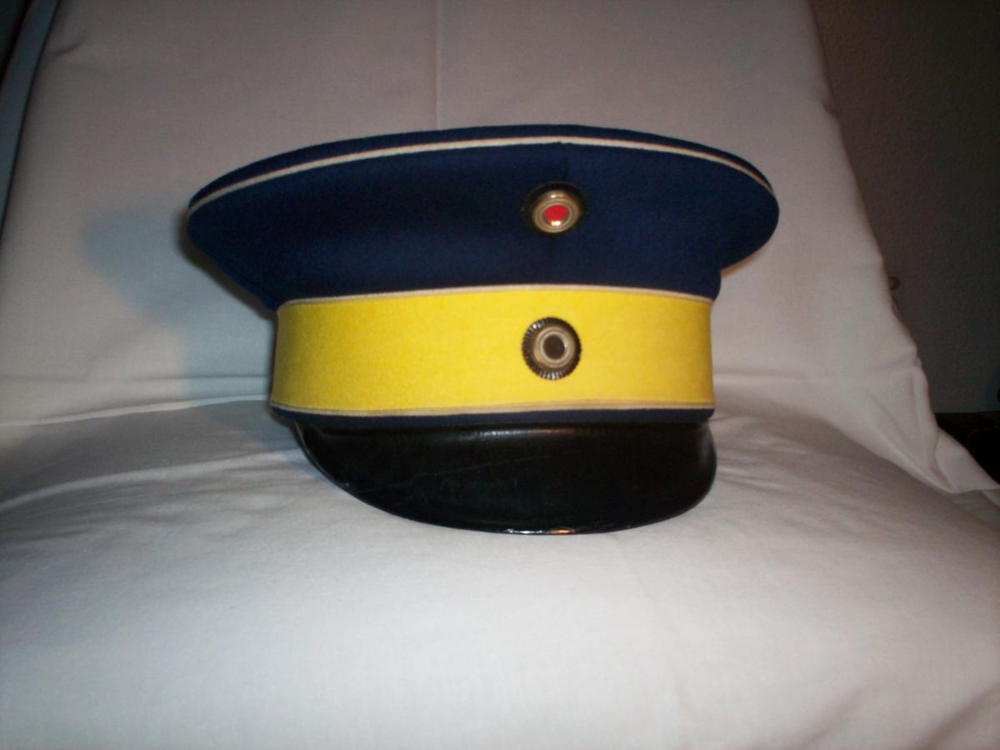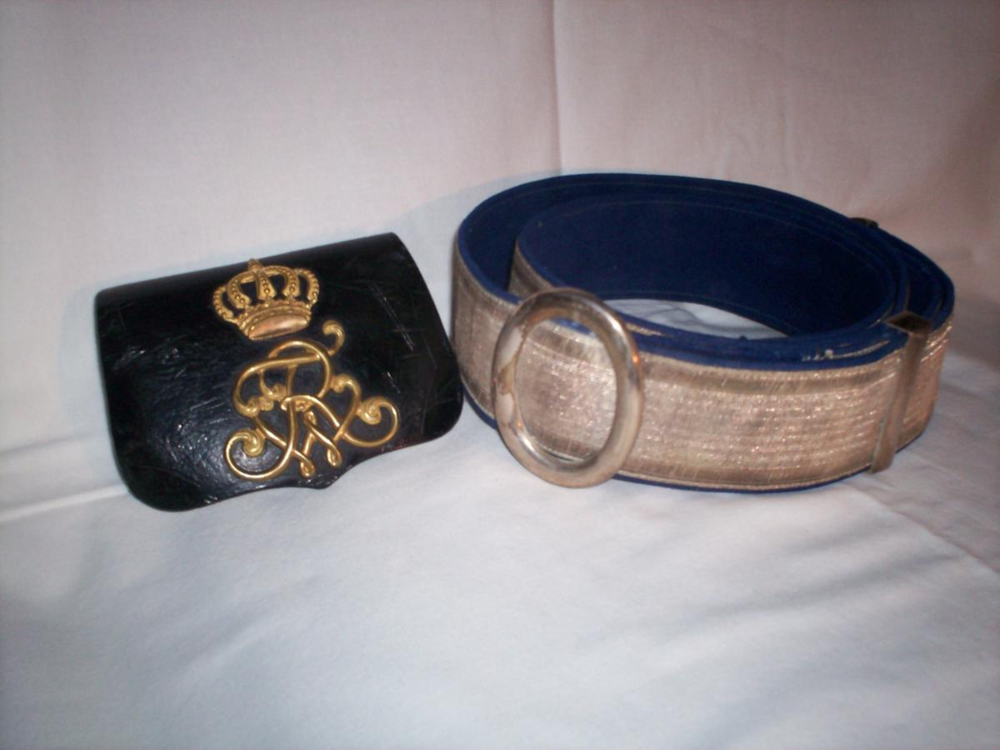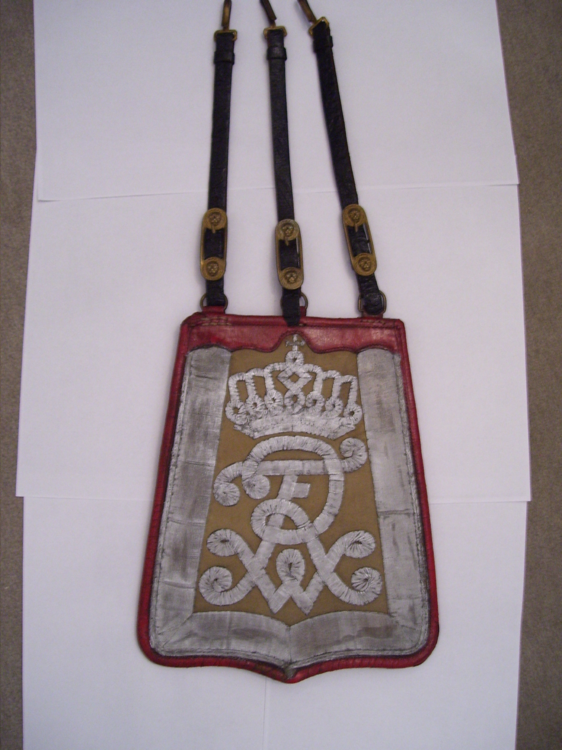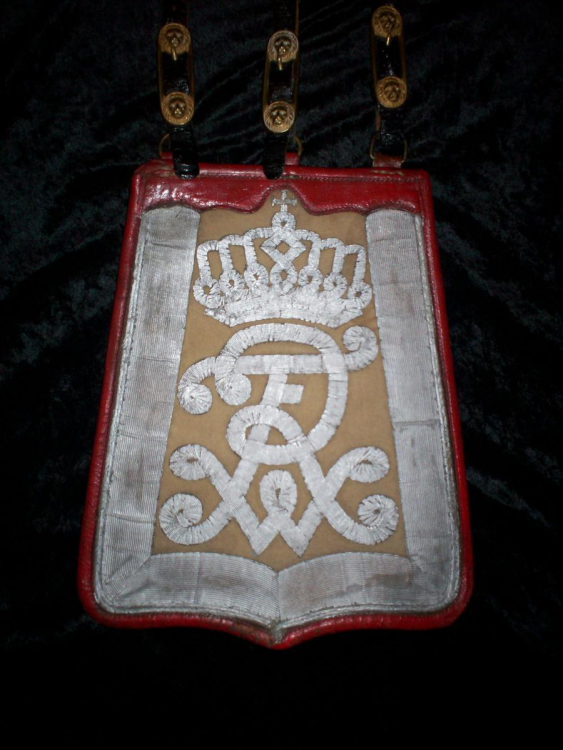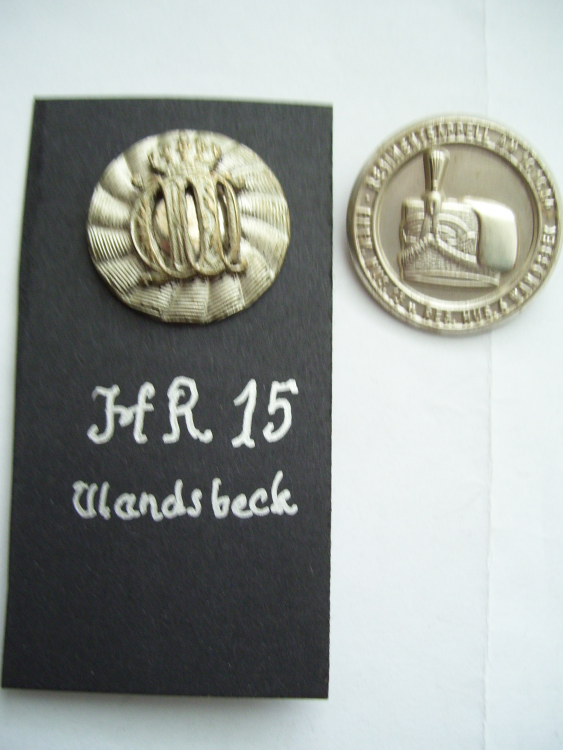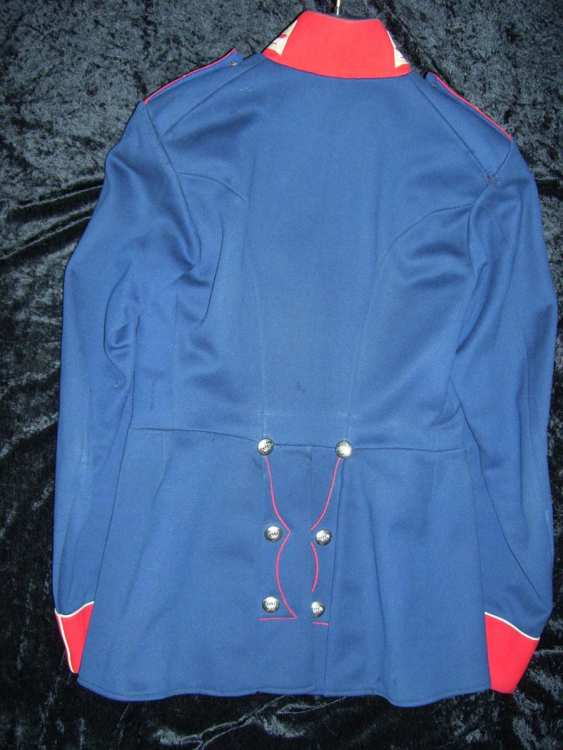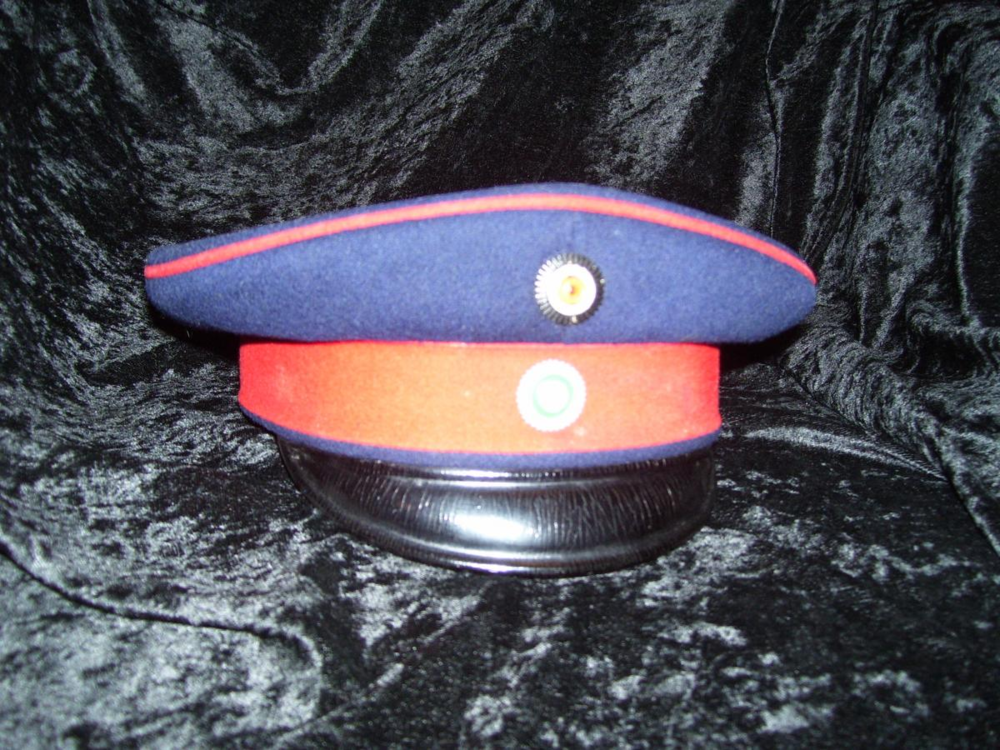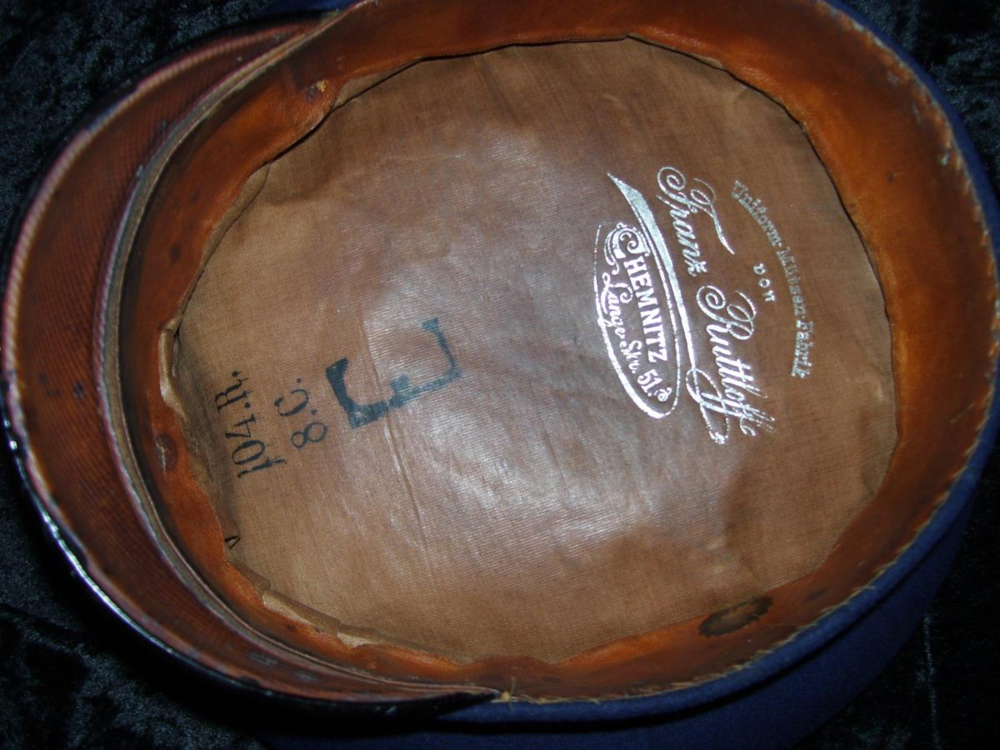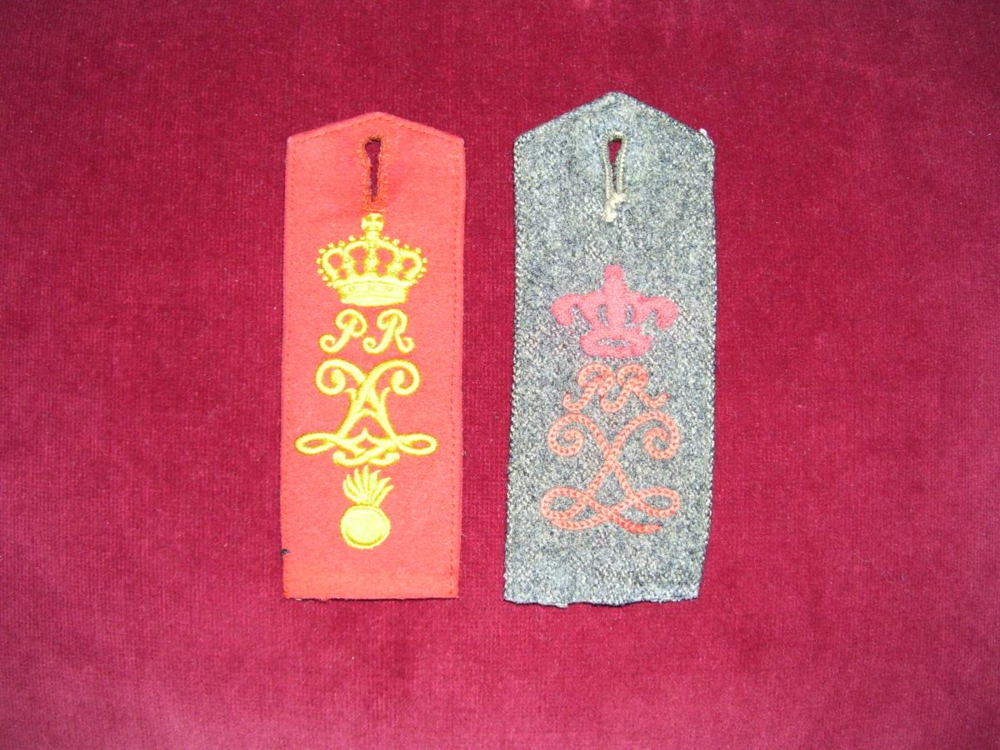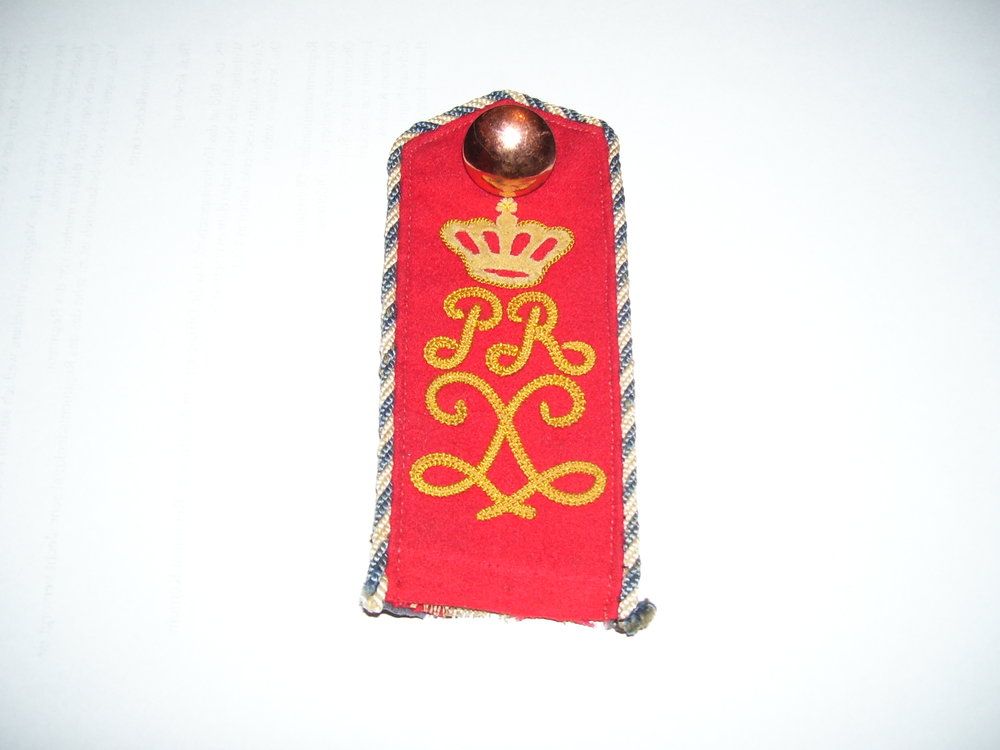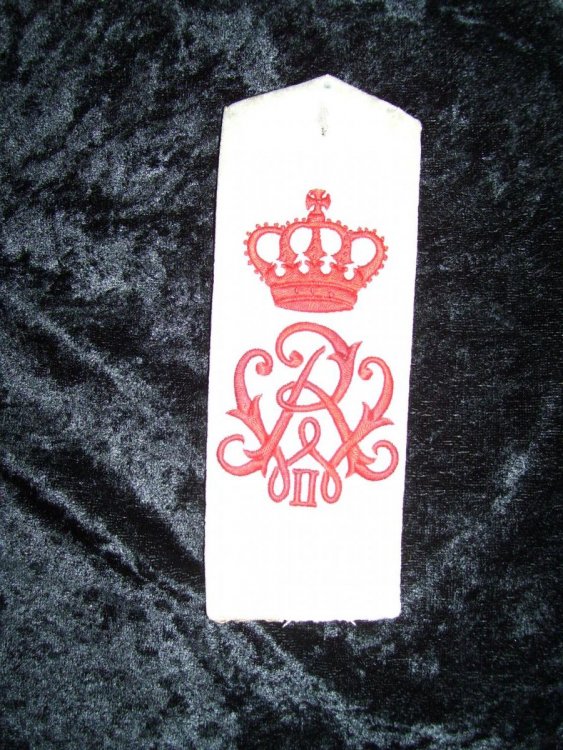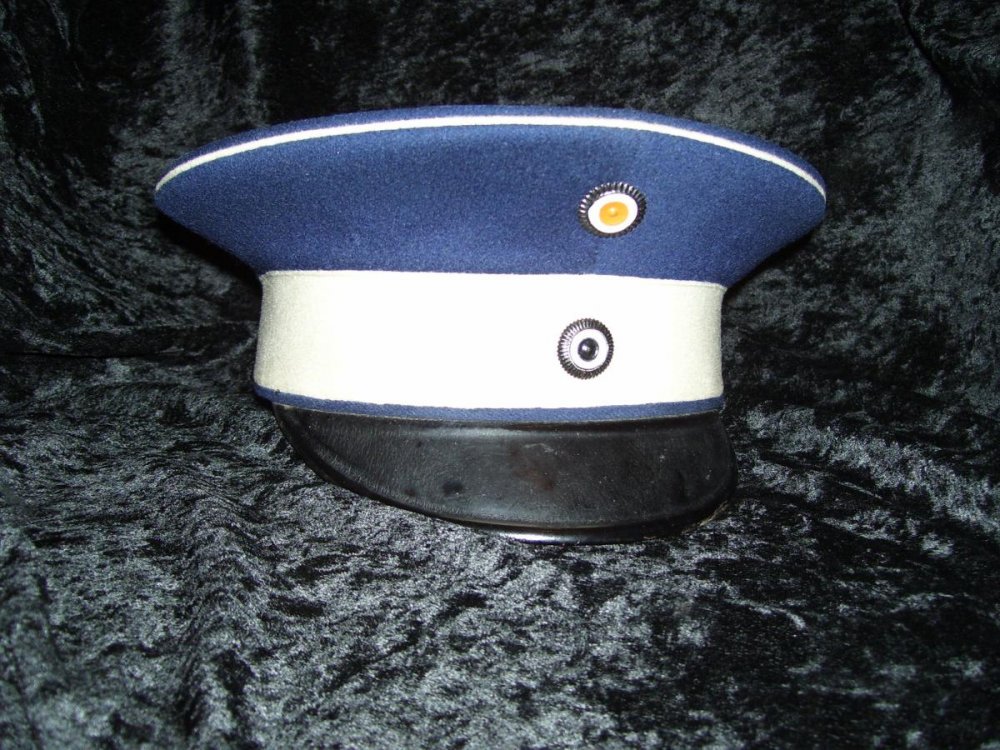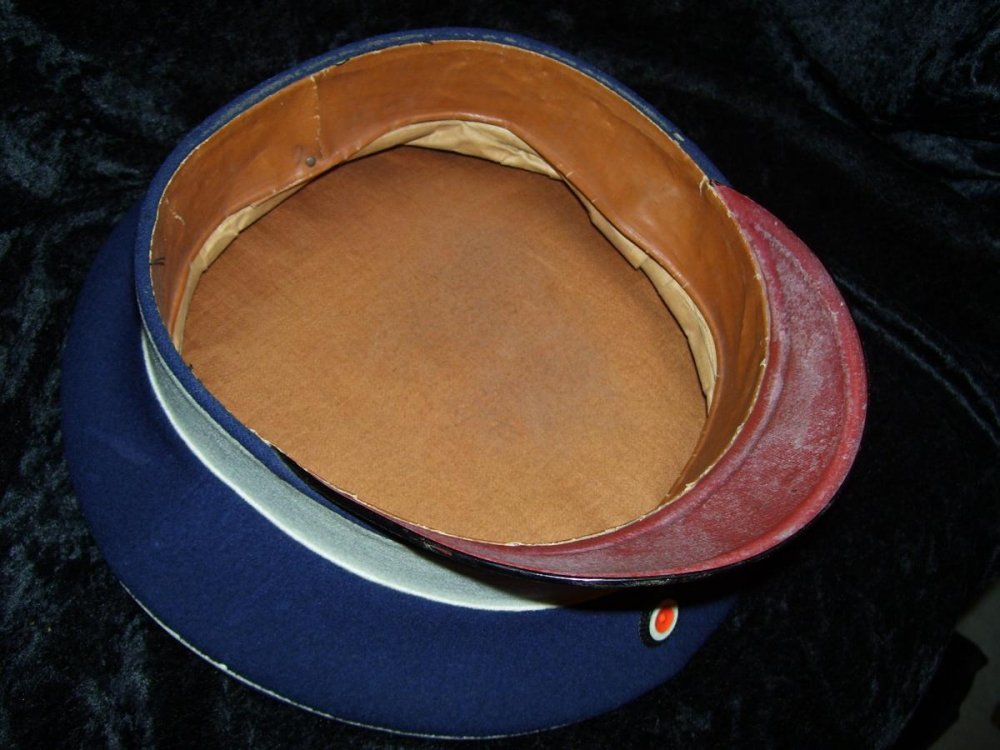Search the Community
Showing results for tags 'uniformen der alten armee'.
-

Prussia, Kürass, Heavy Cavalry Breast- and Backplate
Fritz posted a topic in Uniforms, Belts and Buckles
Prussian Heavy Cavalry Breast- and Backplate A Kürass of the Prussian heavy Cavalry, as worn by all eight line regiments. The breast and backplate have both original rough white linen liner, the breastplate has a large pocket in the liner for the field cap. There is a cloth name tag attached, Kürassier Lindau, Kür.8, 5. Esk. Both steel pieces are stamped under the left armpit with regiimental details, at slight variance: 8.K. 2.E. the 2E has been stroked out and replaced by 5.E.30, being the 5th squadron, weapon no.30. The backplate has 8.K. 5.E. and a weapon no.31. The piece is undated, but can be dated between 1888 - 1914. In the 1850s new cuirasses were made to replace the old models from the Napoleonic Wars, mostly of captured French stock. In 1888 the cuirass was abolished for field service and retained only for ceremonial occasions. New cuirasses were then introduced, being of a thin leightweight steel, no longer protective. The cuirasse was then officially abolished in January 1916 with the old coloured peacetime uniforrms. The cuirasse was always worn with a white leather shoulder bandelier with black cartridge box, or Kartuschkasten. This was fitted with a round brass medallion with the Prussian eagle and trophies A broadsword or Pallasch was worn. The example shown belonged to Kürassier-Regiment Graf Gessler (Rheinisches) No.8, of whom King George V was the last honorary commander in chief. This regiment wore a white Koller with bright green facings and yellow metal buttons, the shoulder straps bore the crowned monogram of King George V.. The cuirasse is displayed with a helmet of Kürassier-Regt.2, not matching. -

Westpreußisches Fussartillerie-Regiment 11, Thorn
Fritz posted a topic in Uniforms, Belts and Buckles
Westpreussisches Fussartillerie-Regiment No. 11, based in Thorn a.d. Weichsel, West Prussia, XVII. Armee-Korps. A photo from album of uniforms previously in my collection, and a uniform type that is seldom encountered. The tunic is in similar cut to the infantry pattern, but with the red-piped black facings of the artillery, it has the typical "Brandenburg" cuffs of the infantry. The cuff patch is of dark blue tunic cloth, the remaining cuff black with red edge piping as shown. The shoulder straps for all foot artillery regiments were white with a red regimental number. A shoulder button with the company number was also worn. The foot artillery was issued with the same basic equipment as the infantry, however, belt and leather equipment were white, cartridge boxes were always black (bayonet frog in picture should also be white). They were usually armed with the standard infantry rifle, a carbine is shown in the photo. The helmet was of same pattern as per infantry, but with a non-removable ball-top fitting, as no plumes were worn. As from 1897 leather chinstraps were worn, whereas the field artillery units wore chinscales. -

Ulanen-Regiment 15, Uniform Accessories and Epaulettes
Fritz posted a topic in Uniforms, Belts and Buckles
Schleswig-Holsteinisches Ulanen-Regiment No. 15 Commander in Chief: Generaloberst Prinz Leopold von Preussen, K.H. Commander: Oberst von Printz Garrison: Saarburg/Lothringen (XXI. Armeekorps) A matching pair of Epaulettes for other ranks or n.c.o. ca. 1880-1890. These are considerably larger than later examples. Buttons of 1.Eskadron, one of which is a replacement. Traces of age and wear. Peakless cap and Pass-Gurtel for other ranks or n.c.o. The cap has a maker's name, Uwe N.Breininger, Militair Mützen Fabrik, Saarburg i./Lothr., Lange Str.70. The belt has a red ink stamp of U.R.15 Further photos are of a yellow Tschapka-Rabatt, which was fitted around the Tschapka throat for parade and full dress . The braid loop is for attachment of the cap-lines when worn. The Rabatt is for the older Tschapka model of 1867, which had a larger top than later models. Uniform: Dark blue "Ulanka" with yellow facings, white metal buttons. Tschapka with white metal fitings. The regiment formed a joint brigade together with Ulanen-Regiment 11, also based in Saarburg. The regiment was raised in 1867 and first based in Perleburg, Kyritz and Wusterhausen. After the war of 1870/71 the regiment was based in Strassburg/Elsass. In 1896 it moved to Saarburg. In August 1914 the regiment saw duty in patrolling the frontier in Lorraine. In September it took part in the advance to Amiens and Compiègne. After the retreat, the regiment was sent to the coast during the "race to the sea", where it saw service as dismounted infantry until December. The joint brigade then saw service till April 1915 in the Vosges and was involved in the fighting around Hartmannsweiler-Kopf. The brigade then saw service in the rear areas in Belgium. On 15th December 1916 the brigade was sent to the Eastern Front, where it remained till the end of March 1918. It was in the line at Dünaburg and advanced to Estonia and Livland. After the return to the Western Front, the brigade was converted into a fighting unit and from May 1918 took part in the defensive battles till the end of the war. After the return home, the brigade was demobilised in Osterburg/Altmark. The tradition of the regiment was maintained by 3rd Squadron, Reiter-Regiment No.11 in Gera. Further illustrations of a Ulanka of U.R.15 for a one-year volunteer, very similiar to the example I once had. Illustration by A.v.Seebach, 1885 of an Ulan (Gefreiter) of Schleswig-Holsteinisches Ulanen-Regiment 15 -
Was given this beautifull old cap today by someone who thought it was an old Navy cap from his family. A member of that family had perished on a U-Boot during WW1. However, this cap turned out to be a military cap from Braunschweig, Duchy of Brunswick. I had never seen a cap before in this colour combination, and it is a very early example - before March 1897, as it has never had a Reichskokarde, just the Brunswick cockade, dark blue with a gold ring and a silver Landwehr Cross, denoting the status of the wearer. The cockade is also the officer version, as the ring is gilded and not lacquered. The old Brunswick uniforms before 1886 differed entirely from the Prussian. The Infantry had a blueblack tunic with concealed buttons and light blue collars and cuffs, the Tschako in Brunswick pattern was worn. With the blue band and crown piping, it also has an additional yellow piping to upper and lower edges of the band. This possibly denoting a Militärbeamter or official. Brunswick was a very small state and only had one infantry regiment, 92, Husaren-Regiment 17 and 2 batteries of Artillery later attached to Feldartillerie-Regiment 46 in Wolfenbüttel and Celle. The silver Landwehr Cross has the tiny inscription M.Gott.f.Fürst u.Vaterland above a wreath. There are two name entries within the liner, Jürges and Heuer, both attached to the family this came from. It came complete in a very old hat box, probably not belonging to the cap. There is also a makers mark in the lining August Hessemeyer, Helmstedt. The cap came with an old hat or cap box, very slightly too small, but around same age (photo). Cap has now had a light cleaning, first of all with a vacuum cleanter, then with steam, avoiding contact to leather parts. As a comparison, a re-enactment photo of the Brunswick Leib-Bataillon during the Napoleonic Wars. The traditional colours were adhered to till 1886. The Tschako bore the Brunswick "Todtenkopf" device. The traditional tunic after the Napoleonic Wars was known as a "Polrock", the cut being of Polish origin. Brunswick cockade for Reserve and Landwehr in blue and gold. Fine silver miniature Landwehr cross with inscription: "Mit Gott für Fürst u. Vaterland" Inside of leather peak is red. Maker's mark of August Hessemeyer, Helmstedt, handwritten name, Heuer Other Brunswick headdress of the old pattern Tschako for Infanterie-Regiment 92, III. or Füsilier-Bataillon, worn till 1886 (Internet photo) Tschako-Emblem for Infanterie-Regiment 92, I. and II. Bataillon, worn with the old uniform till 1886, after which, a spiked helmet was introduced (Internet photo) A WW1 period photo stated to be of a Brunswick Landsturmmann Herzogl. Braunschweigische Post, Briefträger, 1850. Brunswick infantry: Füsiliere, with Russian "Kiwer" style Tschako, ca. 1840. Print by Dietrich Monten. A re-enactment group. Not all quite 100 percent
-
Tschako Plate most likely for post 1920 Reitende Landgendarmerie*, Land Mecklenburg. Identical to the emblem of II. Btl. Grenadier-Regiment 89 for Mecklenburg-Strelitz, which did not bear a crown in its emblem. However, this is the version adapted for wear on the Tschako as worn by the above mentioned authorities after 1920. During February 1918, Adolf Friedrich VI. died without leaving any heirs to the throne. Friedrich Franz IV. of Mecklenburg-Schwerin took over the regency of the state until his abdication in November 1918. In 1920 both lands of Mecklenburg-Schwerin and Mecklenburg-Strelitz were united as one state as Freistaat Mecklenburg within the Weimar Republik. Tschako models of the period are known in two versions, the Tschako was in the form of the traditional Prussian Tschako, with the difference that the head part was formed of spanish cane and covered with either bright red or bright green cloth. The top and the bottom edging and peaks were in the usual black lacquered leather. A cockade was worn in the colours of Mecklenburg, red-yellow-blue. * The Reitende Landgendarmerie Mecklenburg-Strelitz (Distrikt-Husaren) wore the red topped Tschako, the Gendarmerie zu Fuß wore a light green coloured Tschako.
-
Other ranks cap for walking out dress of Niedersächsisches Fußartillerie-Regiment Nr. 10, based in Straßburg/E., XV. Armee-Korps. Marked in the blue lining is the name of the wearer: Ersatz-Reservist Friedrichs, 1. Batr. (Batterie) Fuß Artr. 10 Late peacetime example around 1914.
-
Uniform accessories for an officer of Husaren-Regiment 15: See also previous articles about Husaren-Regiment 15 Officer's cap, worn by Major Freiherr von Tettau. Bandelier and Kartuschkasten with crowned FWR monogram. The bandelier is backed in blue uniform cloth as per the Attila, with silver brocade and silver plated fittings. Worn from the left shoulder to the right hip - the buckle to the rear. Säbeltasche, yellow cloth, silver braid, red maroquin leather, hangers of patent leather with fire-gilded bronze fittings The Säbeltasche is in need of some restoration, yellow cloth is faded, the braid has at some time been overpainted with silverbronze, which requires carefull removal. All extremely rare items. Kavallerie-Degen 89, non-issue, with engraved Regimental motives. Members badges for the Regimental associations (later)
-
Tunic for other ranks, private purchase, from the Bavarian Infanterie-Leib-Regiment, stationed in München. This Regiment was the Royal Household Regiment of the Kings of Bavaria, and was raised in 1814, belonged to the I. Bavarian Army Corps. The tunic is of a lighter blue than the Prussian regiments, and as often encountered, of a ribbed cloth material, commonly seen with Bavarian private purchase uniforms. This was the only regiment in the German army to wear buttons with a crown on the peacetime uniforms. It was also the only Bavarian regiment to wear white metal buttons, Swedish cuffs and Garde-Litzen. All other regiments wore the Brandenburg Cuff. It also has the unusual feature of a white piping to the upper cuff edge. The shoulder straps for all Bavarian infantry regiments were red, in this example with a yellow woven crown. The shoulder buttons have an impressed 3 for the 3rd company (wrongly restitched). The helmet had all white metal fittings, including the chinscales, no parade plumes were worn. The regiment served in 1916 on the Verdun front and suffered heavy losses. Chevauleger helmet - identical to the helmet worn by the Leibregiment till the introduction of the new helmets in 1896.
-
Uniform items for a Rittmeister der Reserve of 2. Hannoversches Dragoner-Regiment Nr. 16, based in Lüneburg. Regimental Chief was King Albert of Belgium. The white metal helmet emblem had a Waterloo scroll, regimental colours were lemon yellow, collar and cuffs piped white, buttons silver. Old photo of items no longer in my collection. N.B.: These items would not have been worn together in this order. The cap is the so-called "Reitmütze", more often seen on a racecourse and with a sportive jaunty look, not matching a dress tunic with epaulettes, also of a slightly darker blue tone than the tunic. The "Feldbinde" (belt) would also not be worn with epaulettes, an officers sash (Paradeschärpe) would have been worn. The weapon shown is the Kavallerie-Säbel M.1852, worn till 1889 but still favoured by some officers, etc.
-
Peaked cap for other ranks for walking out dress from Royal Saxon 5. Infanterie-Regiment No.104, 8th Company, based in Chemnitz i./Sa. Dark blue top, darker than in photo, red band and crown piping, small black lacquered leather peak, brown glazed calico lining and leather sweatband with silver embossed maker's mark Franz Ruttloff, Chemnitz, Lange Strasse 51. There is an issue stamp: 104.R., 8.C. and a large stamped E, meaning that the recruit has purchased the cap for his own property, E meaning "Eigenthum". The cap can be dated around 1897 to 1900 by its low shape, and the Reichskokarde was added after 22. March 1897. The regiment was formed in 1701 and belonged to the XIX. Army Corps. The state cockade is white with a green ring. A considerable quantity of Saxon items has emerged on the market since the re-unification in 1990, this item purchased then.
-
Shoulder strap, September 1915 for Feldartillerie-Regiment Prinzregent Luitpold von Bayern (Magdeburgisches) No.4 based in Magdeburg, raised 1814. As from September 1915 shoulder straps for all field artillery units were bright red. Backing in fieldgrey. Below the crowned monogram of PRL is a flaming artillery grenade. Prinzregent Luitpold ruled Bavaria from 1886 till 1912 (Interregnum). The regiment belonged to the IV. A.K. (Prussia) Shoulder strap, 1914/15 for 1.Feldartillerie-Regiment Prinzregent Luitpold (Bavaria) based in München, raised 1824 and belonged to the I. Bavarian Armee Korps. After the outbreak of war, some shoulder straps were subject to simpified manufacture and without piping. On rough stonegrey serge. Monogram PRL slightly faded, damage to crown. The Bavarian artillery regiments wore no grenade on shoulder straps Königlich Bayerisches 1. Feldartillerie-Regiment Prinz-Regent Luitpold, Einjährig-Freiwilliger
-
A peaked dress cap - Schirmmütze for other ranks walking out dress of Königs-Ulanen-Regiment (Hannoversches) No. 13 based in Hannover. Cap can be dated as around 1914. To compliment this is an other ranks' shoulder strap for the greatcoat, peacetime wear. Otherwise metal-edged epaulettes were worn. The shoulder-piece is in the regimental colour, white and bears the crowned monogram of it's honorary commander-in-chief, Kaiser Wilhelm II., this example is hand-embroidered. Certain items from this popular regiment often turn up on the collector's market, usually epaulettes, tunics, caps and occasionally swords with regimental engraving. Other items from this regiment, however, are considerably rarer.


